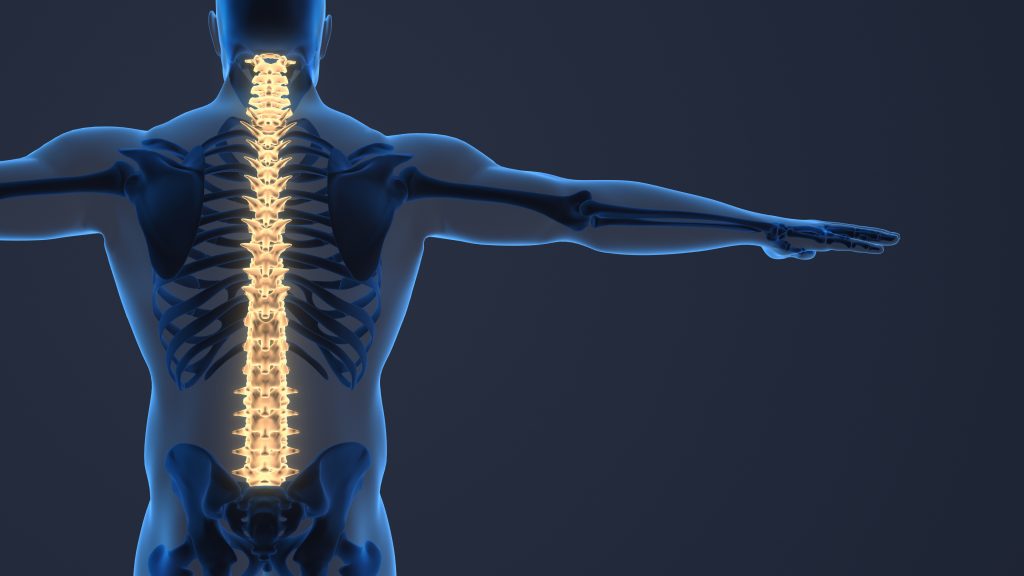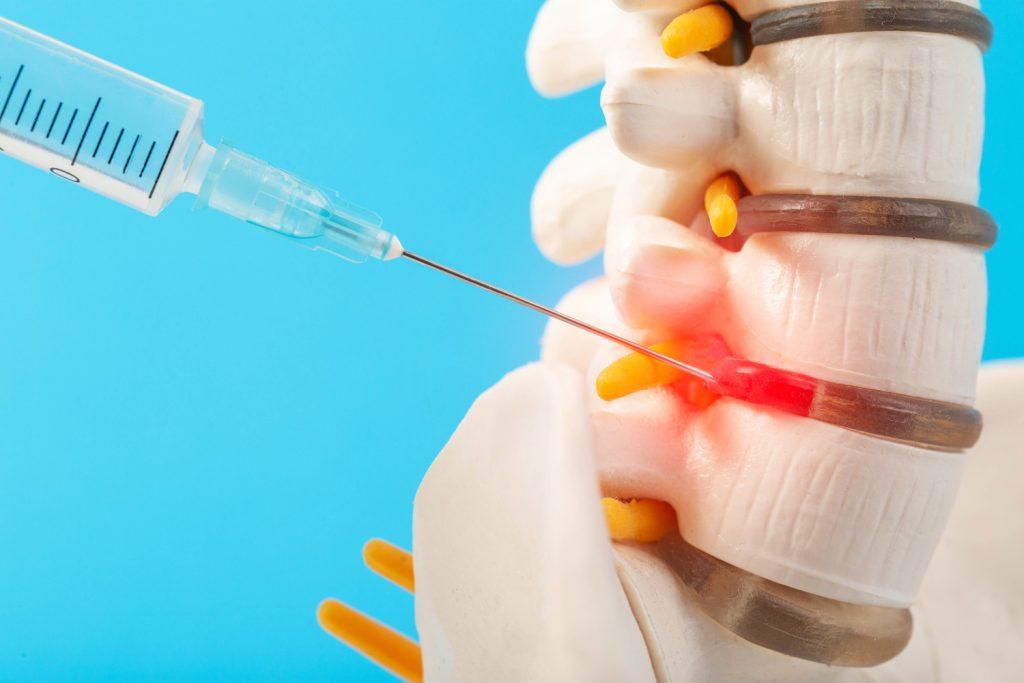10 Tips for Caring for Your Cervical Spine Health

This article addresses neck pain and discomfort, often indicators of cervical spine injuries. It emphasizes the importance of cervical spine health, exploring common causes of injuries and preventive measures. The article also covers symptoms, diagnosis, and treatment options for cervical spine issues, providing 10 practical tips to maintain good cervical health and ensure proper neck care.
What Is the Cervical Spine?
The cervical spine in the neck comprises seven vertebrae (C1 to C7) and is essential for head support and movement. Its facet joints and intervertebral discs allow stability, flexibility, and weight distribution across the neck. Proper alignment is crucial to maintaining nerve function and preventing musculoskeletal issues, as misalignments can cause pain and stiffness and affect nerve signaling.
Why Is Cervical Spine Health Important?
Good cervical spine health is vital as it protects the spinal cord, facilitating communication between the brain and the body. Problems in this area can cause significant pain, discomfort, and nerve issues. Maintaining proper posture, engaging in regular exercise, and adopting ergonomic practices to support the cervical spine is essential. For conditions like herniated discs, cervical stenosis, or radiculopathy, treatments such as epidural injections or spinal cord stimulation may be necessary. These interventions help reduce inflammation, relieve pain, and improve function, enhancing overall quality of life.
What Are the Common Causes of Cervical Spine Injuries?
Cervical spine injuries can stem from traumatic events such as whiplash during car accidents, degenerative diseases like osteoarthritis, and overuse due to poor posture or repetitive movements. Whiplash involves sudden, jerky motions that can damage the neck’s soft tissues, leading to pain and restricted mobility. Osteoarthritis gradually erodes the cartilage between vertebrae, causing pain, stiffness, and reduced neck flexibility. Factors like prolonged sitting and inadequate ergonomics also contribute to cervical spine issues, highlighting the need for good posture and consistent physical activity.
How Can You Prevent Cervical Spine Injuries?
Preventing cervical spine injuries involves adopting habits that promote spinal health, such as maintaining proper posture, using ergonomic seating, and practicing safe lifting techniques. Ergonomics is crucial; setting up a workspace that encourages good posture can significantly reduce neck and back strain. An ergonomic chair that supports the spine and aligns the body is beneficial. Posture is equally essential; maintaining neutral spine alignment and avoiding slouching is vital to reducing cervical spine pressure. Correct lifting techniques, like bending at the knees and using leg strength instead of the back and neck, are essential to prevent injuries and enhance overall spinal health.
Maintain Good Posture
Good posture is essential for cervical spine health, helping to evenly distribute body weight and reduce strain on neck and back muscles. Using lumbar support in chairs and standing desks can improve spinal alignment. Adjusting lumbar support to match the spine’s natural curve is crucial, preventing slouching and reducing lower back pressure. Standing desks provide a healthy alternative to prolonged sitting, allowing for regular posture changes and reducing the risk of musculoskeletal imbalances. Adjusting the desk to keep the computer screen at eye level helps maintain a neutral neck position.
Exercise Regularly
Regular neck stretches and core-strengthening exercises enhance cervical spine stability, flexibility, and posture. Strong core muscles support the spine and reduce cervical strain, with exercises like planks, bird dogs, and bridges providing significant benefits. Gentle neck stretches, such as chin tucks and lateral neck stretches, release muscle tension and improve neck mobility. Consistently integrating these exercises into your routine can strengthen the cervical spine, preventing stiffness and discomfort.
Use Proper Lifting Techniques
Proper lifting techniques, such as bending at the knees and keeping the spine straight, help prevent strain on the cervical spine and reduce the risk of musculoskeletal injuries. Correct methods ensure even weight distribution and involve engaging core muscles during lifting to protect spinal health. Additionally, avoiding smoking is crucial as it impairs circulation and hinders tissue healing, which is essential for spinal health. These precautions significantly contribute to maintaining a healthy spine and overall well-being.
Avoid Repetitive Strain
Repetitive strain injuries can impact the cervical spine due to prolonged screen time. Taking breaks, staying hydrated, and making ergonomic adjustments to prevent strain and musculoskeletal issues are important. Extended periods hunched over devices intensify neck and upper back strain, causing discomfort and potential long-term problems. Setting reminders to limit screen time and taking regular breaks for stretching and movement can relieve cervical spine pressure. Proper hydration helps maintain health and lubricate the spine while creating an ergonomic workspace with appropriate lighting, a supportive chair, and a monitor at eye level, which improves posture and reduces strain. Balancing work and rest is essential for overall well-being and self-care.
What Are the Symptoms of Cervical Spine Injuries?
Symptoms of cervical spine injuries include neck pain, headaches, tingling or numbness in the arms or hands, and weakness in these areas, which could indicate underlying spinal issues. Sufferers may also experience neck stiffness, shooting arm pain, or balance difficulties, ranging from mild discomfort to severe, debilitating pain that impacts daily activities and quality of life. If untreated, these symptoms can lead to more severe complications such as loss of coordination, muscle weakness, or difficulty with bowel or bladder control. Prompt medical evaluation and treatment are crucial for persistent or worsening cervical spine symptoms.
Neck Pain
Neck pain, commonly associated with cervical spine issues, can be alleviated through treatments like heat therapy, massage sessions, and posture improvements. Heat therapy increases blood flow, eases muscle stiffness, and relieves tension, while massage therapy targets specific muscles, releases knots, and enhances circulation, reducing pain and boosting flexibility. Additionally, ergonomic adjustments such as improving sitting posture, using supportive pillows, and setting up an ergonomic workstation can significantly reduce neck discomfort. Gentle stretching and maintaining good posture throughout the day also effectively manage and prevent pain related to cervical spine issues.
Tingling or Numbness in the Arms or Hands
Tingling or numbness in the arms or hands often signals nerve compression in the cervical spine, and addressing these symptoms promptly is crucial to prevent further nerve damage and restore normal sensation. This condition can arise from various causes, including repetitive strain injuries, herniated discs, or carpal tunnel syndrome. Symptoms like tingling, numbness, weakness, or pain can escalate to long-term complications if ignored. To avoid permanent nerve damage that impacts daily life and quality of life, it’s essential to seek medical evaluation for an accurate diagnosis and appropriate treatment. Consulting a healthcare professional is strongly advised for effective management.
Weakness in the Arms or Hands
Weakness in the arms or hands can often be linked to cervical spine issues such as herniated discs, spinal stenosis, or nerve compression, which may result in nerve impingement or irritation. Core-strengthening exercises can enhance spine support and stability, alleviate pressure on the cervical region, and potentially reduce extremity weakness. These exercises and those that improve posture and alignment benefit overall spinal health and can help address symptoms associated with cervical spine problems.
Headaches
Cold packs, rest, and anti-inflammatory drugs can relieve headaches linked to cervical spine issues. Improving posture and neck flexibility through exercises can also help prevent such headaches. While immediate relief can be achieved with cold packs and meds, it’s important to identify triggers like stress, poor sleep, or certain foods. Keeping a headache diary can help track patterns and manage them effectively.
How Are Cervical Spine Injuries Diagnosed?
Cervical spine injuries are diagnosed through physical exams, medical history assessments, and imaging tests like MRI scans. Physical exams assess range of motion, neurological function, and signs of tenderness or deformity. Medical history helps understand the injury’s context. MRI scans provide detailed views of soft tissues, nerve roots, and vertebral discs, aiding accurate diagnosis and treatment planning.
What Are the Treatment Options for Cervical Spine Injuries?
Treatment options for cervical spine injuries encompass a spectrum ranging from conservative measures to surgical interventions tailored according to the severity and nature of the condition. Non-invasive approaches typically involve rest, physical therapy, and medications such as anti-inflammatory drugs or epidural injections to alleviate pain and inflammation. Rest and physical therapy are pivotal in reducing inflammation, restoring mobility, and strengthening supportive muscles, with personalized therapy plans offered by providers like Summit Health. Medications target underlying causes of discomfort, though potential side effects should be considered. In cases where conservative treatments fail, surgical interventions like spinal fusion may be necessary to stabilize the spine and alleviate symptoms, with specialized clinics like Brisbane Spine Clinic providing expertise in complex procedures to optimize patient outcomes.
How Can You Maintain Good Cervical Spine Health?
Maintaining good cervical spine health necessitates a proactive approach involving regular stretching, ergonomic adjustments, and seeking guidance from professionals like chiropractors. Consistent stretching enhances flexibility and reduces tension, while chiropractic care helps maintain spinal alignment. Emphasizing proactive habits like good posture, hydration, and exercise further supports spinal well-being, forming a comprehensive strategy for cervical spine health.
Stretch Regularly
Regular stretching, supplemented by tools like cervical pillows and occasional massage therapy, is key to maintaining cervical spine flexibility and reducing muscle tension. Stretching enhances the range of motion, prevents stiffness, and boosts circulation, while cervical pillows provide ergonomic support during sleep, reducing strain. Massage therapy targets tension areas, promoting relaxation and muscle recovery. Consistent use of these practices prevents cervical spine issues and improves overall well-being and posture.
Use Proper Ergonomics
Proper ergonomic practices, such as adjusting computer screen heights, using supportive chairs, and incorporating foam pillows for neck comfort, can significantly enhance cervical spine health and reduce strain during prolonged sitting. Ensuring proper posture and ergonomic seating prevents musculoskeletal disorders and promotes overall well-being. Positioning the screen at eye level reduces neck strain, while using chairs with lumbar support maintains the spine’s natural curvature, preventing back pain. Adding a supportive pillow for the lower back alleviates pressure on discs and muscles, enhancing sitting comfort.
Practice Stress Management
Engaging in stress-reducing activities such as mindfulness practices, herbal tea consumption, or seeking support from resources like quit.org.au can positively impact cervical spine health by promoting muscle relaxation and overall well-being. Chronic stress can lead to neck and shoulder muscle tension, affecting spine alignment and health. Incorporating relaxation techniques into daily routines can mitigate the physical toll of stress. Herbal teas with calming properties like chamomile or valerian root can alleviate stress and promote relaxation. Platforms like quit.org.au offer resources and support for stress management, aiding in developing coping strategies and fostering community connections for improved well-being.
Warning: urlencode() expects parameter 1 to be string, array given in /www/wwwroot/surgeryconsultantsofflorida.com/wp-includes/formatting.php on line 5693

